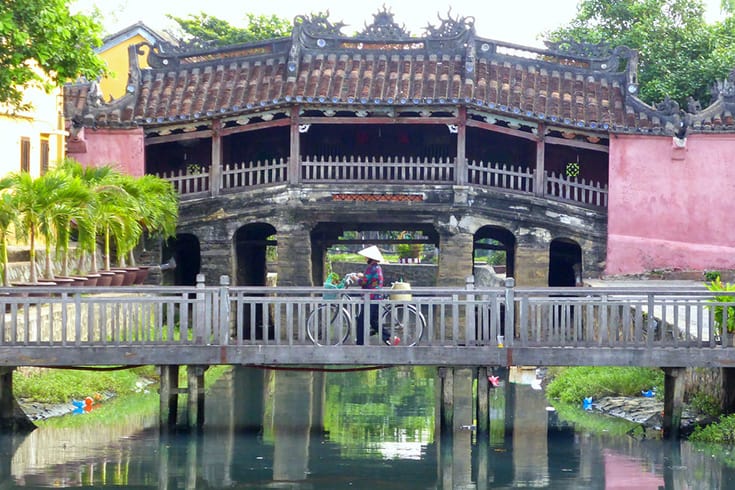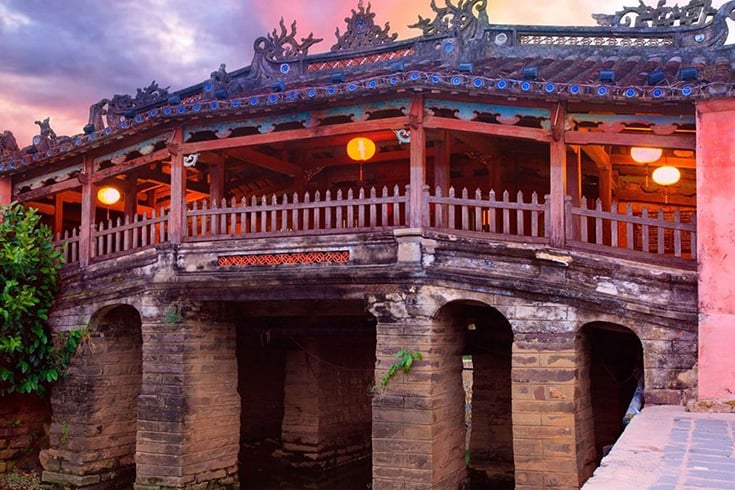Japanese Covered Bridge – The Legacy Of Ancient Japan in Hoi An
With a history of more than 400 years, nowadays, the Japanese Covered Bridge, aka Cau Pagoda, might be considered as one of Vietnam’s most iconic attractions, Hoi An’s Japanese covered bridge dates back to the 18th century and is a beautiful historical piece of Japanese architecture. It is claimed that it was created by the Japanese then living in Hoi An as a way to reach the Chinese quarter across the water. Coming to Hoi An old town, it will be a waste if you don’t stop by the Japanese Covered Bridge at least once.
The Japanese Covered Bridge underwent renovation work in 1986 which saw the restoration of the arch that was once flattened to make way for cars. Today, the bridge stands as a symbol of Hoi An and remains as aesthetically pleasing as it was when it first opened.

Being built by the Japanese, so of course, the bridge was also named “the Japanese bridge”. Some ancient people believed that the bridge served its position as the magical sword to control the Japanese monster Namazu. This was a hideous and dangerous monster, which was so big that its head stayed in India, its body lied in Vietnam and its tail was in Japan. The “sword” – as in the Bridge, had succeed in stopping it from squirming and causing frightfully earthquakes.

Ever since it was built until now, the Japanese Covered Bridge had gone through a total of 7 times being repaired, in 1763, 1815, 1875, 1917, 1962, 1986 and 1996. Sometimes, small adjustments were made on the monument’s roof, floor and pillars as well. Recently, the People’s Committee of Quang Nam province is allowing Hoi An to start renovating the Bridge again.
The Japanese Covered Bridge impresses its visitors also by the stunning curved roof, which covers every inch of the bridge. The roof was also decorated with yin and yang patterns, this is one of the trademarks of Vietnamese culture and architecture.
On each side of the Bridge, there are small corridors and benches for visitors to sit down and rest if needed. The temple and the Bridge were separated by a thin wooden wall.
Everything of the Japanese Covered Bridge – from the material, the design to the patterns and decorations are significant features of Vietnamese, Japanese and Asian culture. Therefore, many consider the Bridge as a harmonizes of Eastern architecture.

The Japanese Covered Bridge is very well preserved and features a roof meaning you can visit at any time of day regardless of the heat or the rain.
Location: The bridge is located at the west end of Tran Phu Street in Hoi An and is easily reached from the town centre.
Remarks: There are no restrictions with regards to dress code and the bridge is always open
